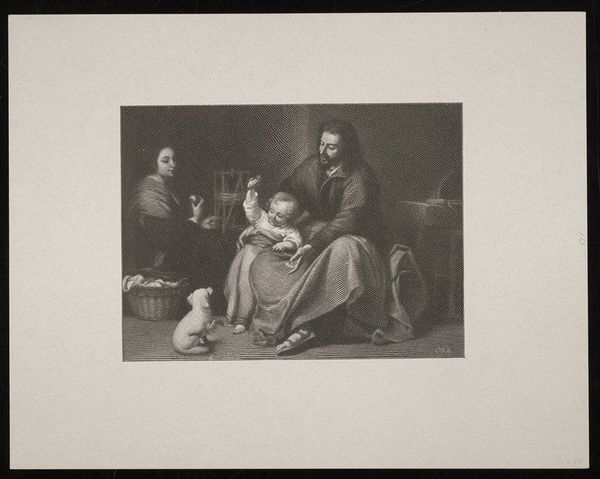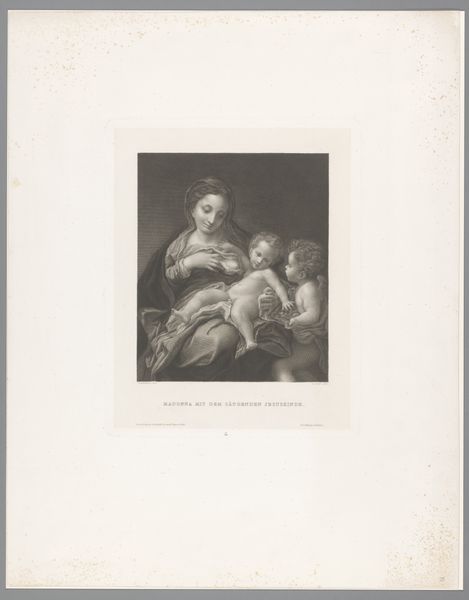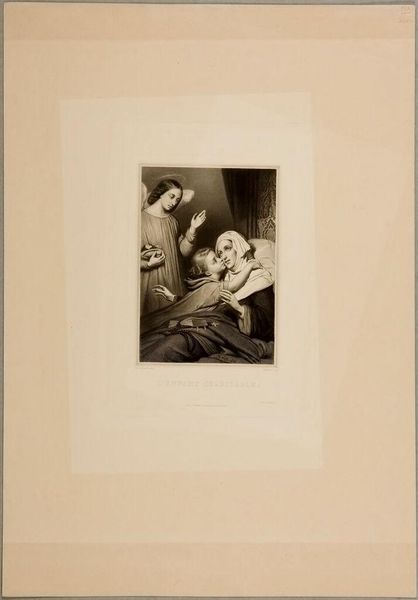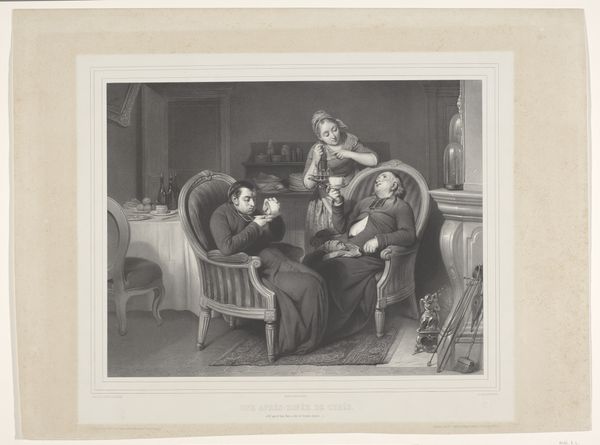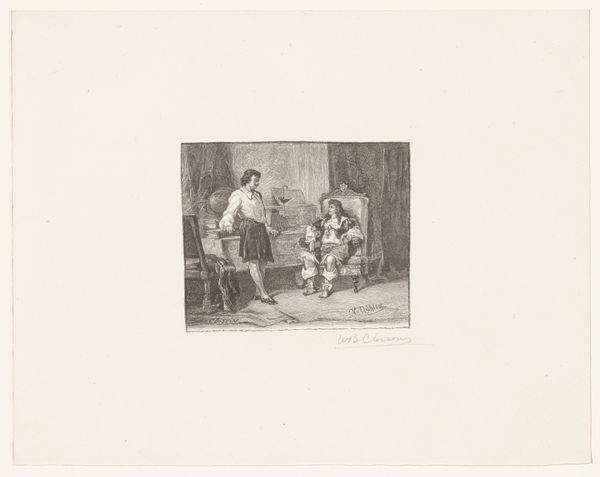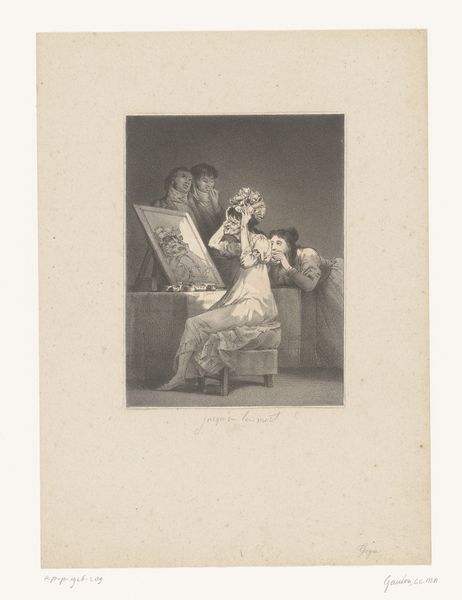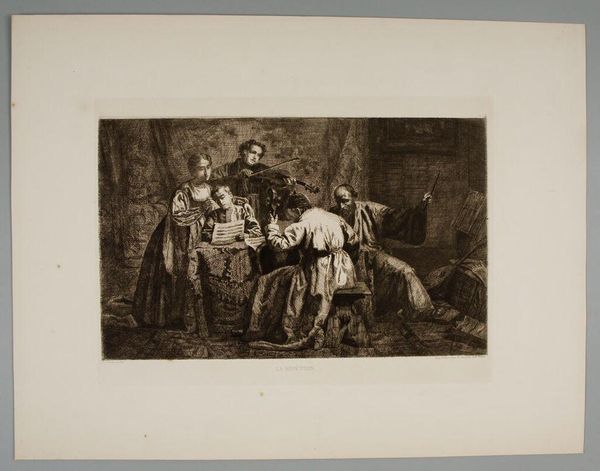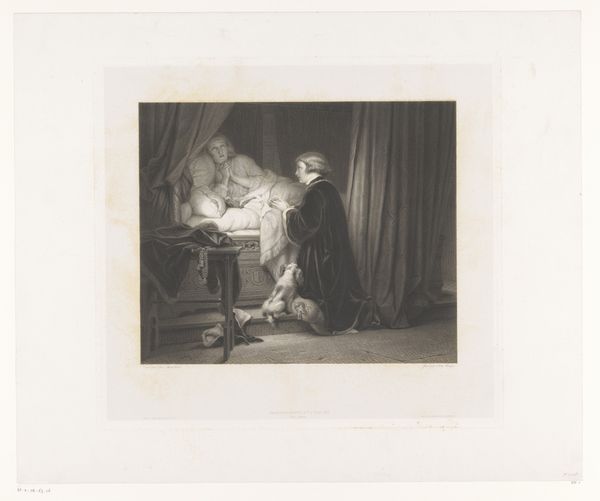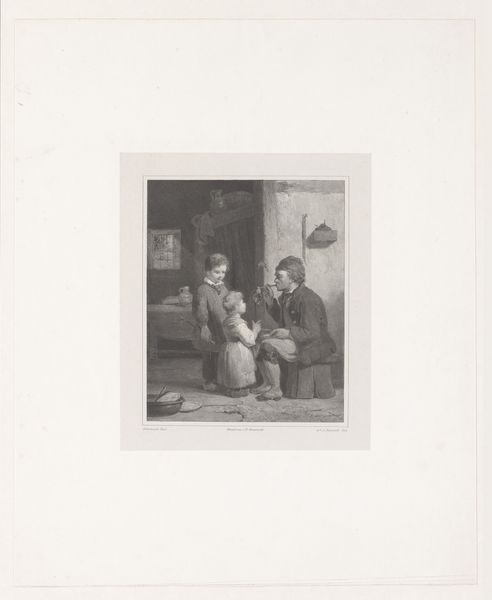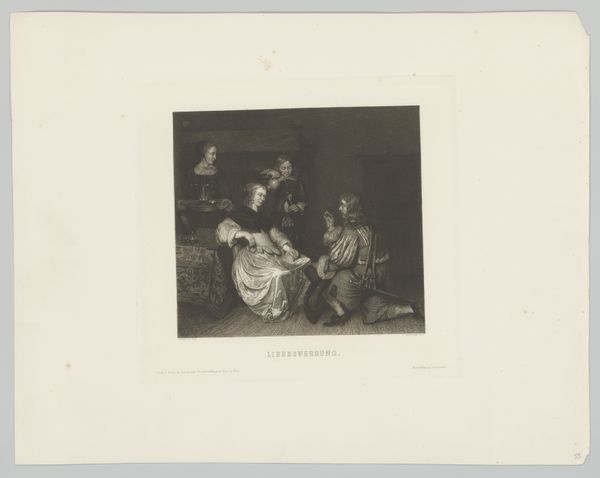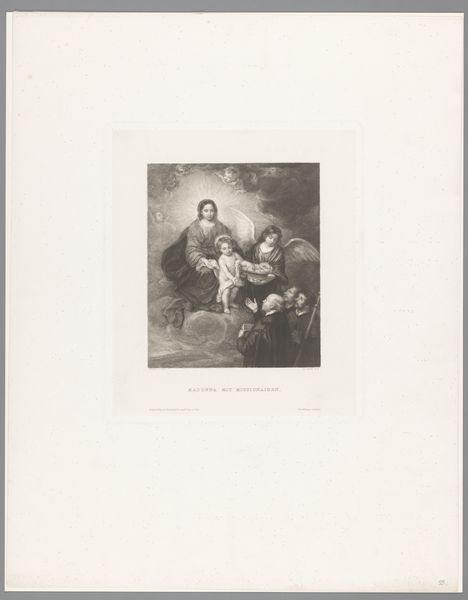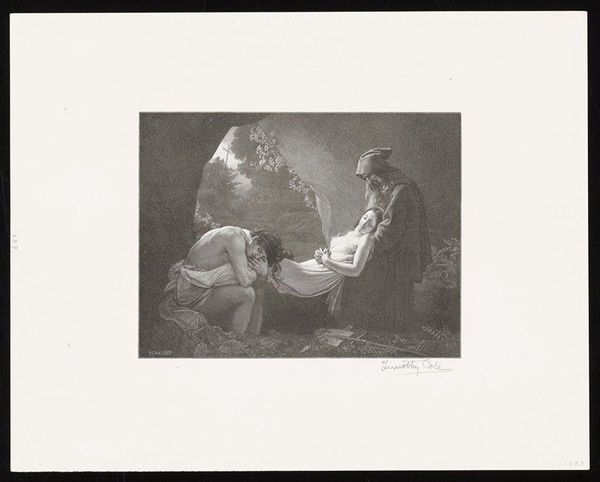
print, woodcut, wood-engraving
#
portrait
# print
#
woodcut
#
genre-painting
#
academic-art
#
wood-engraving
Dimensions: 5 1/16 x 6 5/8 in. (12.86 x 16.83 cm) (image)9 9/16 x 12 1/16 in. (24.29 x 30.64 cm) (sheet)
Copyright: No Copyright - United States
Curator: Let's examine "The Holy Family of the Little Bird," a wood engraving created in 1905 by Timothy Cole, now held at the Minneapolis Institute of Art. Editor: My first impression is the sheer labor evident in the marks themselves. The cross-hatching creates a somber, almost humble mood, appropriate given the theme, of course. Curator: Indeed. This piece asks us to consider how traditional iconography interacts with emerging industrial methods of reproduction. Look at the portrayal of domesticity, almost sentimental. But then reflect on the socio-economic forces enabling Cole to disseminate such a familial ideal to a wider audience. Editor: Right, because the very act of making these wood engravings requires an artisanal skill becoming quickly displaced by machine reproduction at the time. You’ve got hand work depicting humble work! What materials did Cole employ and where did they come from? And, of course, we must acknowledge the labor involved. Curator: It forces us to question whose realities are valued and represented and which remain in the shadows. The gaze of the Virgin seems resigned, distant. I wonder, what constraints was Cole operating under, recreating and also perhaps critiquing this representation of domesticity and spirituality? How were images like these deployed ideologically? Editor: The composition strikes me. The darkness in the background, emphasizing their physical closeness, almost cloistered as it seems separated from outside life. And even this little bird that grabs baby Jesus’ attention could have ties with their relationship with nature: Is it a representation of their environment and even of the family's dependence on this nature? Curator: It also reminds us that religious narratives often reinforce the patriarchal structures, portraying women primarily in their roles as mothers and wives. Is there something revolutionary even for those figures that is presented by this scene of domestic harmony, or is it merely a replication? Editor: We can appreciate the family moment, and appreciate also the sheer materiality: the labor involved to make an income by providing wood engraved images in a machine-produced economy. These layered paradoxes are just… palpable. Curator: Absolutely, these dialogues highlight art’s complexities: the individual and cultural forces woven together in its creation and reception, opening spaces for meaningful, critical reflection. Editor: A dense nexus, for sure! I think exploring its tangible and historical properties reveals stories beyond what it depicts to what the artist makes it and it provides to us to contemplate today.
Comments
No comments
Be the first to comment and join the conversation on the ultimate creative platform.
